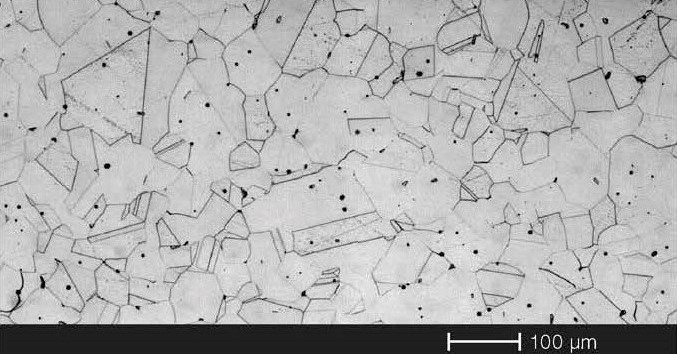MIM 316L is used in applications that need extremely high corrosion resistance. Additional qualities include excellent elongation and ductility, and non-magnetic. Parts made from this material are often used in the food, marine, and medical industry.
MIM 316L is an austenitic stainless steel based on the AISI 316L standard. It is commonly used in corrosive environments. Worldwide the AISI 316 is the second most used austenitic grade after AISI 304, However in MIM the 304L grade is not readily available, so the AISI 316L is used in all applications, where AISI 304L would be used.
The MIM 316L subgrades come in a wide variety. Different properties can be achieved, e.g. some grades are better for polishing, some for geometrical stability. The selection of grade for the final product is done with close regards to the requirements of the part.
Chemical specification
The chemical composition of MIM 316L after sintering is as follows. (Measured in % of weight).
| C % | Cr % | Ni % | Mo % | Mn % | Si % | Fe % |
| ≤ 0.03 | 16-18 | 10-14 | 2-3 | ≤ 2 | ≤ 1 | Balance |
Typical properties
Properties can vary and can of course be adjusted to your application needs. It is however important to remember, that the properties are intercorrelated – demands on certain properties will offset values for other properties. If you e.g. have a need for higher hardness then it will influence elongation to a lower value. You have to be willing to forego other properties, if you have high demands in one area.
The challenge is to know what kind of properties are needed. Especially if it is the first times working with MIM. Many drawings are not designed with MIM in mind, but rather regular machining.
The best solution to this issue is to use our many years of design and production experience. Please consult our experts early in the process for further discussions and information regarding material selection and not least design possibilities. For some guidance however, here are the typical properties of finished sintered parts:
| Sintered | |
| Density [% of theoretical] | ≥ 98 |
| Yield strength Rpo.2 [MPa] | 150 – 200 |
| UTS Rm[MPa] | 450 – 510 |
| Elongation [%] | ≥ 50 |
| Hardness [HRB] | ≥ 67 |
Typical Microstructure

